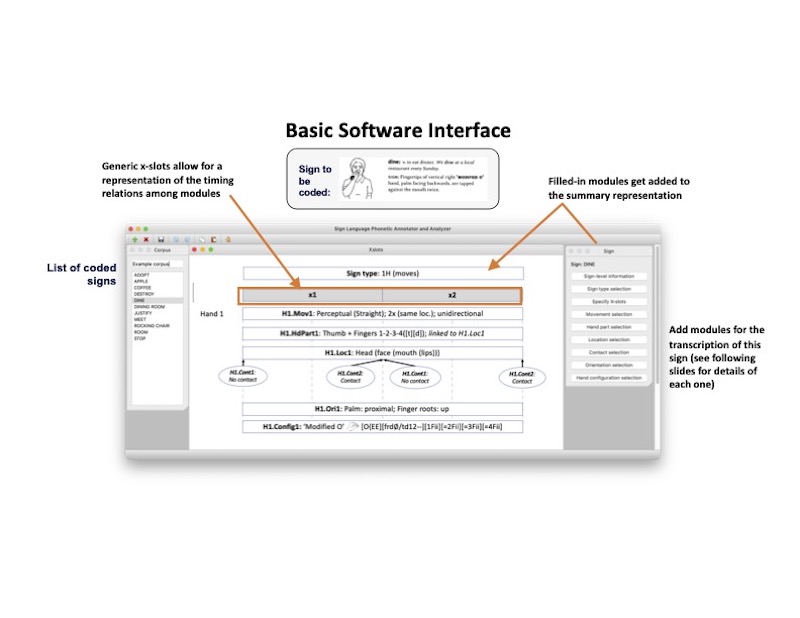A new software being developed is allowing researchers to give detailed, phonetic transcriptions of signs used in sign languages, such as American Sign Language (ASL), one of the sign languages used in Canada.
The Sign Language Phonetic Annotator/Analyzer (SLP-AA) is a graphical user interface-based software system for the form-based transcription and analysis of signs, being developed by phonologist and Associate Professor of Linguistics at UBC Vancouver, Dr. Kathleen Currie Hall, with contributions from Postdoctoral Fellow, Oksana Tkachman, PhD students Roger Lo and Kaili Vesik, former MA student, Yurika Aonuki, and a number of undergraduate research assistants.
The software has two primary components: the annotator portion and the analyzer portion. The annotator, which is currently about three-quarters completed, will include modules for coding meta information and for transcribing sign type, movement, location, contact, hand configuration, orientation, and non-manual components. A challenge that the team is facing is simply how much time goes into coding the software due to the fine level of detail required.
“The SLP-AA is designed to help facilitate doing really fine-grained transcriptions, or linguistic encoding, of the form of signs in sign languages. For example, once you know what the hand shape is, you then have to take the time to determine where on the body, or in what space, that hand is located,” said Hall. “There’s this whole proliferation of information when you actually start thinking about seemingly ‘simple’ signs that exist in sign languages.”
The analyzer portion of the software, intended to facilitate phonological searches and analyses, will allow users to search for any combination of specifications within the detailed coding, as well as to conduct phonological analyses such as finding signs that differ in a specific number of characteristics.
Hall received a SSHRC Insight grant with collaborators Nigel Howard (University of British Columbia), Janet Jamieson (University of British Columbia), Julie Hochegesang (Gallaudet University), Erin Wilkinson (University of New Mexico), Hope Morgan (Radboud University) and Nathan Sanders (University of Toronto), looking at a particular theory of phonology with respect to how it’s implemented in sign languages, and will be using the SLP-AA software once completed to transcribe the full Canadian Dictionary of ASL, which will be addressing the large gap that currently exists in ASL linguistic databases.
“We’re going to transcribe the whole Canadian Dictionary of American Sign Language, which has approx. 9000 signs, because currently nothing like that exists,” said Hall. “There are some ASL databases out there, but they are surprisingly small even compared to those of some other sign languages that exist in the world. There’s a strong need for these types of data resources.”
While the SLP-AA is a tool created to be used predominantly by linguists for linguistic analysis, there are also use-cases for the broader community. Hall explained that the software can be of great value to sign language instructors and learners, for example, by allowing users to search for signs based on their inherent form rather than through an English translation of the meaning. What’s perhaps more important, however, is that it’s a big step towards greater representation of sign languages being studied by the linguistic community.
“If we want to really bring the same 21st-century analytical techniques we use on spoken languages to sign languages, we need ways of creating much more detailed phonological analysis of the signs,” said Hall. “From a research perspective, it’s so important that we’re being inclusive of sign languages, not just spoken languages.”
To learn more about the SLP-AA and access the current version of the software, click here. To view a video demonstration of the software, click here.
Written by Kelsea Franzke
